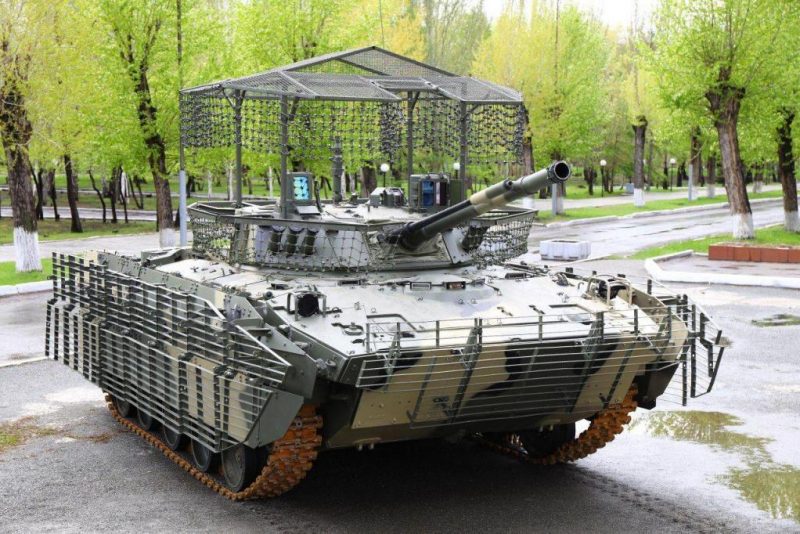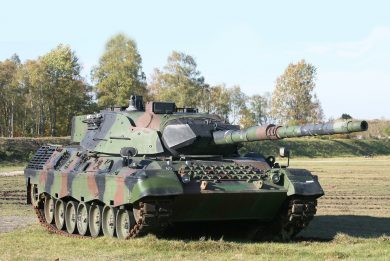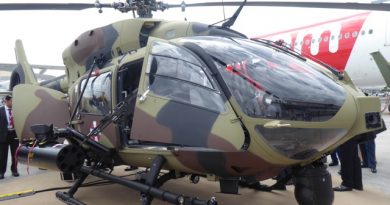Kurganmashzavod delivers BMD-4M and BMP-3 upgraded for war in Ukraine
Russia’s Kurganmashzavod has delivered a batch of BMD-4M airborne infantry fighting vehicles (IFVs) and BMP-3 IFVs that have been improved with survivability upgrades to better meet the threat posed by drones in Ukraine, according to a 7 May announcement on the Rostec website.
Imagery published on the 18th of May shows that the vehicles have been fitted with bar armour on the sides of the hull as well as upper hemisphere protection in the form of a cage over the turret roof. Chains hang from the highest and lowest portions of the cage. Bar armour is regarded as statistical protection, which means that it will affect an RPG-type projectile for a percentage of strikes and cannot guarantee that it will always provide that level of protection. Conventional steel armour, by comparison, always provides a level of protection against projectiles unless it fails completely.
Bar armour is designed to defeat projectiles using a double-skinned nose as a conductive path for a piezoelectric-based fusing system, including RPG-7 and SPG-9 families. The theory of bar armour is that the warhead would strike a gap in the armour, the rigid structure of which will crush the walls containing the piezoelectric crystals and lead to a short circuit that prevents the fuse from operating. If it is successful in doing this, then the RPG will not detonate effectively if at all, this can lead to reduced penetration or failure to form a jet. Bar armour is also limited as the angle of attack increases which means that strikes that approach the vehicle at angles greater than 30 degrees are unlikely to be affected.
The cage is designed to deflect and degrade the impact of the small drones that Ukraine has come to rely upon as its primary form of fires in some areas of the front. Observed attack methodologies include munitions dropped onto the vehicle by drone, or the first person view (FPV) drone loaded with a PG-7 type warhead flown directly into it. The cage should provide some protection against both, but should not be expected to provide a complete solution. They are likely to complicate the task of successfully hitting a vehicle, and reduce some of the impacts if the Ukrainian forces are able to land a munition.
The upgrade also includes the Nakidka thermal camouflage system, which is designed to cover the vehicle and reduce its thermal signature. When developer NII Stali first revealed Nakidka to the public in 2009, it was claimed to reduce a vehicle’s probability of detection by sights using mid and long-wave infrared imagers (3.5 – 5 μm and 8 – 16 μm respectively) by 200%, and day cameras by 30%. It is also claimed to reduce the likelihood of detection by radar.
The camouflage weighs 2 kg per square metre and can take up to an hour to fit per square metre depending on the vehicle. Nakidka had not entered widespread service with Russian units when they invaded Ukraine, however, serial production and delivery to other Russian defence enterprises was reported in June 2023. This is approximately in line with the increased availability of thermal imagers on the Ukrainian battlefield.
Russia’s defence industry appears to be mobilising and reacting to the conditions of the war in Ukraine and taking steps to field developments that will improve vehicle and crew survivability. There have been many home-made solutions to the FPV threat, which generally resemble the factory produced vehicle presented by Rostec. Other Russian units have added the RP-377VM1L jamming system to their vehicle in a bid to disrupt the command link between the drone and its operator. An interview with a Russian T-90M commander published by Russian state media in May indicates that Ukrainian units typically launch 4 – 5 drones per flight. The procedure in such cases is to activate the vehicle’s jamming system and withdraw to a reserve position, the commander said.
The BMP-3 and BMD-4M are undoubtedly valuable vehicles for the crews that operate them; the 100 mm 2A70 main gun and 30 mm 2A72 coaxial cannon fitted to both vehicles provide a good level of firepower that can be used in offensive and defensive operations. However, their base armour is much weaker than that of a tank or even some western IFVs, which makes them vulnerable to RPG-7 type threats. The upgrades announced by Rostec indicate that steps are being taken to address these shortcomings. They also indicate that deliveries are increasing, although it is still not clear whether these are upgrades of existing platforms or newly built vehicles. Kurganmashzavod was regularly delivering BMD-4Ms prior to the war, which indicates that it has a live production line that could be producing new platforms.
Photo courtesy Rostec




